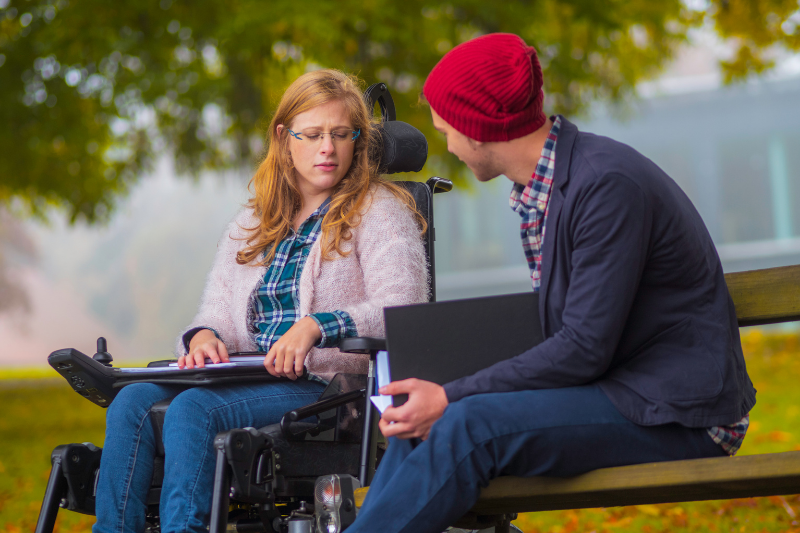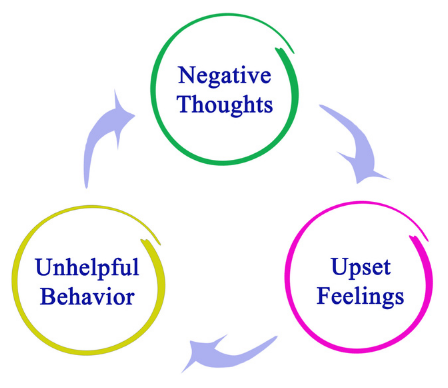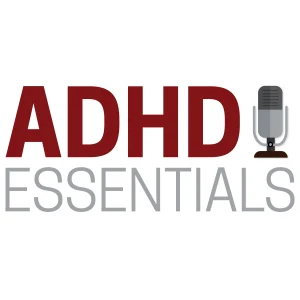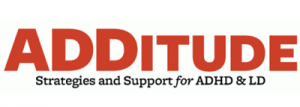Category: Anxiety, Depression & More
ADHD and Bullying (Part 2): How you can prepare kids to support victims of bullying as helpful upstanders
 When it comes to bullying, there are two responsible parties: the bully and the bystander. Bystanders, or “onlookers,” are people who witness bullying behavior and allow the bully to continue by either encouraging it or saying nothing. The unspoken and often unconscious support of the non-aggressive majority–the bystanders- empowers the bully. Therefore, the bystander has a great deal of power and responsibility to intervene and stop the harassment. In part 1 of the ADHD and Bullying series, we learned that neurodivergent kids are sometimes a bully’s target, and other times may bully others. Here, we’ll explore how they can stop being bystanders and instead become upstanders by helping victims of bullying.
When it comes to bullying, there are two responsible parties: the bully and the bystander. Bystanders, or “onlookers,” are people who witness bullying behavior and allow the bully to continue by either encouraging it or saying nothing. The unspoken and often unconscious support of the non-aggressive majority–the bystanders- empowers the bully. Therefore, the bystander has a great deal of power and responsibility to intervene and stop the harassment. In part 1 of the ADHD and Bullying series, we learned that neurodivergent kids are sometimes a bully’s target, and other times may bully others. Here, we’ll explore how they can stop being bystanders and instead become upstanders by helping victims of bullying.
Why bystanders do nothing
“In the end, we will remember not the words of our enemies, but the silence of our friends.” – Martin Luther King Jr.  All too often, bystanders who witness bullying know that it’s wrong and feel guilty for not acting. Yet, they still don’t do anything to stop it. They recognize that the bully is in the position of power and are tempted to participate, feeling relieved that they themselves are not the victim. This is especially true for neurodivergent kids who may frequently find themselves on the receiving end of harassment. Additionally, it’s likely that multiple bystanders are witnesses to any given incident of harassment. People can go along with a group decision or action against their own better judgment or values. In a group, people are often less empathic and caring than they are individually. So, what’s motivating them to side with the bully instead of the victim? Most often, it’s fear. Fear of:
All too often, bystanders who witness bullying know that it’s wrong and feel guilty for not acting. Yet, they still don’t do anything to stop it. They recognize that the bully is in the position of power and are tempted to participate, feeling relieved that they themselves are not the victim. This is especially true for neurodivergent kids who may frequently find themselves on the receiving end of harassment. Additionally, it’s likely that multiple bystanders are witnesses to any given incident of harassment. People can go along with a group decision or action against their own better judgment or values. In a group, people are often less empathic and caring than they are individually. So, what’s motivating them to side with the bully instead of the victim? Most often, it’s fear. Fear of:
-
- Being hurt themselves if they defend the victim
- Becoming the bully’s next target
- Doing something that will only make the situation worse
- Not knowing what to do or whom to ask for help
- Having a reputation for being a “tattler”
Fortunately, we can overcome these fears. Once we understand why we’re afraid to act and the consequences of not stepping in to help, it’s easy to find the courage and compassion to do the right thing.
Why it’s important to help stop bullying
 Kids who get bullied may eventually become bullies themselves, perpetuating the cycle of cruelty. Therefore, taking measures to stop bullying incidents is an important step in breaking this cycle. Most bullying happens under the radar of adults, either at school, in the neighborhood, or online. Kids don’t want to report it because of the enormous stigma attached to being a “tattle”–someone who tells a responsible adult about something in order to get someone in trouble. Cyberbullying has become a serious risk linked to psychological problems in adolescents. Kids and teens who have been cyberbullied reported higher levels of depression and thoughts of suicide, as well as greater emotional distress, hostility and delinquency compared with peers who were not. Students most often report physical appearance, race/ethnicity, gender, disability, religion, and sexual orientation to be reasons for being targeted by bullies. (National Center for Educational Statistics, 2019)
Kids who get bullied may eventually become bullies themselves, perpetuating the cycle of cruelty. Therefore, taking measures to stop bullying incidents is an important step in breaking this cycle. Most bullying happens under the radar of adults, either at school, in the neighborhood, or online. Kids don’t want to report it because of the enormous stigma attached to being a “tattle”–someone who tells a responsible adult about something in order to get someone in trouble. Cyberbullying has become a serious risk linked to psychological problems in adolescents. Kids and teens who have been cyberbullied reported higher levels of depression and thoughts of suicide, as well as greater emotional distress, hostility and delinquency compared with peers who were not. Students most often report physical appearance, race/ethnicity, gender, disability, religion, and sexual orientation to be reasons for being targeted by bullies. (National Center for Educational Statistics, 2019)
Recent statistics on bullying illustrate the extent of the problem:
-
- One out of every five (20.2%) students report being bullied (National Center for Educational Statistics, 2019 ).
- 41% of students who reported being bullied at school indicated that they think the bullying would happen again (National Center for Educational Statistics, 2019).
- 49.8% of tweens (9 to 12 years old) said they experienced bullying at school and 14.5% of tweens shared they experienced bullying online (Patchin & Hinduja, 2020).
However, there is encouraging data, too. School-based bullying prevention programs decrease bullying by up to 25% (McCallion & Feder, 2013). Families can support schools’ anti-bullying education by having conversations about bullying at home. Making students aware that there are better alternatives to being bystanders is an important part of raising healthy, resilient kids. It also contributes to a safer and more supportive community, in which they can thrive.
How to teach kids with ADHD to become helpful upstanders for victims of bullying:
 We can teach children and teens to recognize when they find themselves in the role of onlooker. We can help them overcome their fears and encourage them to take action. Kids with ADHD know all too well how bad it feels to be taunted and feel helpless. So, helping neurodivergent kids identify these feelings is the first step in harnessing their empathy in support of their peers. Encourage your child to recognize situations in which they are bystanders. Ask them to reflect on their feelings about what they see. Assure your child that parents, teachers and other caring adults can help and support them. Adults can recommend safe ways for them to prevent, intervene or address bullying. Most importantly, tell your child how proud you are of them when they show compassion and help targets of bullying. Help them identify the positive emotions resulting from their good deeds. Bystanders can become upstanders through prevention and intervention measures.
We can teach children and teens to recognize when they find themselves in the role of onlooker. We can help them overcome their fears and encourage them to take action. Kids with ADHD know all too well how bad it feels to be taunted and feel helpless. So, helping neurodivergent kids identify these feelings is the first step in harnessing their empathy in support of their peers. Encourage your child to recognize situations in which they are bystanders. Ask them to reflect on their feelings about what they see. Assure your child that parents, teachers and other caring adults can help and support them. Adults can recommend safe ways for them to prevent, intervene or address bullying. Most importantly, tell your child how proud you are of them when they show compassion and help targets of bullying. Help them identify the positive emotions resulting from their good deeds. Bystanders can become upstanders through prevention and intervention measures.
Prevention steps include:
-
- Being inclusive by welcoming others to join their activities and groups
- Being a role model for pro-social behavior by showing kindness, respect and empathy for others
- Walking or sitting with vulnerable kids who may be targets of bullying
- Getting involved with bullying prevention efforts at school or in the community
Interventions during a bullying incident may include:
-
- Defending the target of the bullying verbally or by physically standing near the victim
- Intervening as a group
- Changing the subject
- Questioning the bullying behavior
- Using humor to lighten up a serious situation
- Openly stating an objection to bullying
- Stating approval of the victim and validating his or her social status
Address bullying after it happens by:
-
- Reaching out privately to the target of the bullying to express support and concern
- Inviting the target of bullying to walk to school/class with you
- Offering to sit next to the target at lunch or on the bus
- Reporting the bullying to a trusted adult, parent, teacher or school administrator
- Reaching out privately to the person doing the bullying to express concern, if they feels safe to do so
- Enlisting the help of other kids who dislike the bully. As they say, “there’s power in numbers”
Helpful Resources:
If you’d like addition information and support on bullying prevention or intervention, here are a few recommended resources: 
Articles:
-
- Assistant Secretary for Public Affairs (ASPA). (2021, May 21). Bystanders are essential to bullying prevention and intervention. StopBullying.gov. Retrieved from https://www.stopbullying.gov/resources/research-resources/bystanders-are-essential
- LGBTQ+ bullying. LGBTQ Bullying | STOMP Out Bullying. (n.d.). Retrieved from https://www.stompoutbullying.org/lgbtq-bullying.
- Roberts, M. (2020, August 26). CDC releases National Youth Risk Behavior Surveillance Results. HRC. Retrieved from https://www.hrc.org/news/new-cdc-data-shows-lgbtq-youth-are-more-likely-to-be-bullied-than-straight-cisgender-youth.
Organizations & Websites:
-
- STOMP Out Bullying: https://www.stompoutbullying.org/
- StopBullying.gov. | Health Resources and Services Administration (HRSA) https://www.stopbullying.gov/
- PACER’s National Bullying Prevention Center: https://www.pacer.org/BULLYING/
- The Human Rights Campaign: https://www.hrc.org/
Read more blog posts:
- ADHD and Bullying (Part 1): How to help kids with ADHD recognize, respond to and prevent bullying
- Social Anxiety and ADHD: How to better manage anxiety with supportive planning and preparation
- ADHD, Emotional Regulation and Managing Family Conflict: Replacing Time-outs with Time-in or Time-apart
Watch on Dr. Saline’s YouTube Channel:
Deeper Dive in Dr. Saline’s Store: https://drsharonsaline.com/product/motivation/
ADDitude Mag – Q: “Fear of Failure Holds Me Back. How Do I Let Go of Past Mistakes?”
ADHD and Bullying (Part 1): How to help kids with ADHD recognize, respond to and prevent bullying
 Sadly, it’s all too common that neurodivergent kids to experience some level of teasing, taunting or bullying as they grow. Despite anti-bullying policies in schools and best efforts to raise awareness, kids with ADHD will likely find themselves as victims and/or aggressors at one time or another. Children and teens may not realize when they’ve crossed the line from gentle ribbing into full-on bullying. What may start out as playful interactions may quickly snowball into a serious problem. Kids with ADHD already wrestle with impulse control, emotional regulation and social relationships. Therefore, it’s especially important for them to understand the differences between teasing and taunting. In addition, it’s important for them to grasp the limits of appropriate and inappropriate behaviors. These children and teens will greatly benefit from learning practical tools to use in challenging peer situation based on direct instruction, empathic inquiry and collaboration.
Sadly, it’s all too common that neurodivergent kids to experience some level of teasing, taunting or bullying as they grow. Despite anti-bullying policies in schools and best efforts to raise awareness, kids with ADHD will likely find themselves as victims and/or aggressors at one time or another. Children and teens may not realize when they’ve crossed the line from gentle ribbing into full-on bullying. What may start out as playful interactions may quickly snowball into a serious problem. Kids with ADHD already wrestle with impulse control, emotional regulation and social relationships. Therefore, it’s especially important for them to understand the differences between teasing and taunting. In addition, it’s important for them to grasp the limits of appropriate and inappropriate behaviors. These children and teens will greatly benefit from learning practical tools to use in challenging peer situation based on direct instruction, empathic inquiry and collaboration.
Teasing vs. Taunting
 Teasing is a light, fun thing you do with friends or family—people you care about—without malice. Taunting, however, is a form of bullying. It’s something you do to someone you don’t like, is intentionally harmful, and involves humiliation, cruelty or bigotry. In teasing, you are laughing WITH the person; in taunting, you are laughing AT the person. Let’s consider some examples:
Teasing is a light, fun thing you do with friends or family—people you care about—without malice. Taunting, however, is a form of bullying. It’s something you do to someone you don’t like, is intentionally harmful, and involves humiliation, cruelty or bigotry. In teasing, you are laughing WITH the person; in taunting, you are laughing AT the person. Let’s consider some examples:
-
- Teasing: Giggling at your sibling’s “impressive case of bed hair”
- Taunting: Calling a classmate “fatso” or using other derogatory names
-
- Teasing: Friends in advanced math class calling each other “dork” or “nerd” because they like solving tough calculation problems
- Taunting: Making mean, derogatory remarks about someone’s accent or manner of dress
Teasing is often done with humor, is reciprocal, doesn’t affect self-esteem and will stop when it is no longer fun. Taunting, on the other hand, involves ill will and continues or even escalates after the recipient is hurt or asks for the taunting to stop.
Bullying: Intent and Types
 Bullying is the intent to hurt or intimidate someone whom the bully perceives as weak, vulnerable and unable to defend themselves. It is a repetitive, purposeful, aggressive activity meant to cause harm or fear through the threat of further hostility. Bullying takes different formats: physical aggression (hurting people physically) and relational aggression (starting rumors, exclusion, spreading gossip, taunting and getting people to “gang up” on others). Social media, 3-way phone calls and emails can perpetuate relational aggression. In addition, 24/7 digital connectivity can cause someone to feel like there is no safe space for them.
Bullying is the intent to hurt or intimidate someone whom the bully perceives as weak, vulnerable and unable to defend themselves. It is a repetitive, purposeful, aggressive activity meant to cause harm or fear through the threat of further hostility. Bullying takes different formats: physical aggression (hurting people physically) and relational aggression (starting rumors, exclusion, spreading gossip, taunting and getting people to “gang up” on others). Social media, 3-way phone calls and emails can perpetuate relational aggression. In addition, 24/7 digital connectivity can cause someone to feel like there is no safe space for them.
ADHD and Bullying
 Often, the roles of bully and victim are fluid. Kids who feel insecure or different from others are more likely to be aggressors at one time and then victims at another. Children and teens with ADHD may become easier targets for bullies due to certain behaviors they tend to exhibit. These include impulsiveness, clumsiness, social anxiety, academic struggles and awkwardness. They may also be less awareness about personal space, boundaries and social cues. For instance, kids with ADHD may have greater challenges navigating awkward conversations and reading body language, or they may struggle with identifying when they are in danger of being targeted or attacked. However, the very same impulsivity and socials challenges that make kids with ADHD more likely to be targets of taunting may also lead them to take out their frustrations on others and become more aggressive. As a result, they could become bullies themselves.
Often, the roles of bully and victim are fluid. Kids who feel insecure or different from others are more likely to be aggressors at one time and then victims at another. Children and teens with ADHD may become easier targets for bullies due to certain behaviors they tend to exhibit. These include impulsiveness, clumsiness, social anxiety, academic struggles and awkwardness. They may also be less awareness about personal space, boundaries and social cues. For instance, kids with ADHD may have greater challenges navigating awkward conversations and reading body language, or they may struggle with identifying when they are in danger of being targeted or attacked. However, the very same impulsivity and socials challenges that make kids with ADHD more likely to be targets of taunting may also lead them to take out their frustrations on others and become more aggressive. As a result, they could become bullies themselves.
Why Do Kids Taunt Each Other?
It’s crucial to understand the underlying causes of bullying in order to respond effectively. Bullying is often about power struggles and the need for some kids to come out on top, regardless of the consequences. Although bullies are the clear aggressors, it’s important to note that “bystanders” (those who stand by and allow the bullying to take place without helping) are just as responsible. Bystanders enable and empower the aggressor to do harm. Although they may not be doing the tormenting with their own words or actions, bystanders are just as complicit. Their motivations are also just as complex. (Learn more about bystanders in next week’s blog post – ADHD and Bullying, Part 2!)
The most common causes of bullying are:
- A desire to fit in with/be accepted by “cool” or “popular” kids – “I want to be liked”
- Peer pressure – “If others are doing it, I can too”
- A defense mechanism – “If I bully others, others won’t bully me”
- Way to increase social status – “I feel stronger/smarter/better when I put others down”
Tools for Kids and Teens to Respond to Bullying
 If your child is being bullied, you can teach and support them with these effective interventions: 1. Encourage your child to speak up for themselves in non-provocative ways to assert strength. 2. Remind your child that they are not alone, despite feeling picked on or even isolated. Point out their true friends, and encourage them to spend time together. For younger children, facilitate these meet-ups; for older ones, brainstorm possible ideas. 3. Explore ways for your child or teen to engage the assistance of their true friends in times of need. This can be valuable in tricky social situations that may be potential environments for bullying. Furthermore, discuss techniques and exact phrases to use to extricate oneself from an uncomfortable situation. Use role-play to practice them. 4. Assist your child or teen in monitoring their own behavior. Their actions might unknowingly be provoking negative responses from others. On the other hand, it may be aggressive in some way. Help them build self-awareness about statements, actions or facial expressions that might be misinterpreted as hostile. 5. Talk with teachers about facilitating connections through school collaborations on projects or seating near like-minded individuals. Engage the school’s assistance in fostering positive connections, and make sure they are aware of the social dynamics your child is facing. 6. Create a safety plan that details what to say or do when bullying occurs in person or online. This plan should include: who to talk to (a friend or adult), where to go at school (the office of the nurse or counselor), what to do that is self-protective but not retaliatory, and how to minimize reacting.
If your child is being bullied, you can teach and support them with these effective interventions: 1. Encourage your child to speak up for themselves in non-provocative ways to assert strength. 2. Remind your child that they are not alone, despite feeling picked on or even isolated. Point out their true friends, and encourage them to spend time together. For younger children, facilitate these meet-ups; for older ones, brainstorm possible ideas. 3. Explore ways for your child or teen to engage the assistance of their true friends in times of need. This can be valuable in tricky social situations that may be potential environments for bullying. Furthermore, discuss techniques and exact phrases to use to extricate oneself from an uncomfortable situation. Use role-play to practice them. 4. Assist your child or teen in monitoring their own behavior. Their actions might unknowingly be provoking negative responses from others. On the other hand, it may be aggressive in some way. Help them build self-awareness about statements, actions or facial expressions that might be misinterpreted as hostile. 5. Talk with teachers about facilitating connections through school collaborations on projects or seating near like-minded individuals. Engage the school’s assistance in fostering positive connections, and make sure they are aware of the social dynamics your child is facing. 6. Create a safety plan that details what to say or do when bullying occurs in person or online. This plan should include: who to talk to (a friend or adult), where to go at school (the office of the nurse or counselor), what to do that is self-protective but not retaliatory, and how to minimize reacting.
More Confidence, Less Conflict
 Having a strong sense of self will not only prevent your child from becoming a bully, but will also allow them to respond effectively if others bully them. Nurture self-confidence in your child or teen by identifying interests and capabilities. Help them learn to develop skills and pride in these areas. Be sure to acknowledge their efforts as well as their accomplishments. Furthermore, stay compassionate and steady in your relationship. Your connection strengthens the internal resources necessary to weather painful, peer social dynamics. These are the key nutrients that help grow self-worth and defend against the cruelties of taunting and bullying.
Having a strong sense of self will not only prevent your child from becoming a bully, but will also allow them to respond effectively if others bully them. Nurture self-confidence in your child or teen by identifying interests and capabilities. Help them learn to develop skills and pride in these areas. Be sure to acknowledge their efforts as well as their accomplishments. Furthermore, stay compassionate and steady in your relationship. Your connection strengthens the internal resources necessary to weather painful, peer social dynamics. These are the key nutrients that help grow self-worth and defend against the cruelties of taunting and bullying.
Helpful Resources:
If you’d like addition information and support on bullying prevention or intervention, here are a few recommended resources: 
Articles:
-
- Assistant Secretary for Public Affairs (ASPA). (2021, May 21). Bystanders are essential to bullying prevention and intervention. StopBullying.gov. Retrieved from https://www.stopbullying.gov/resources/research-resources/bystanders-are-essential
- LGBTQ+ bullying. LGBTQ Bullying | STOMP Out Bullying. (n.d.). Retrieved from https://www.stompoutbullying.org/lgbtq-bullying.
- Roberts, M. (2020, August 26). CDC releases National Youth Risk Behavior Surveillance Results. HRC. Retrieved from https://www.hrc.org/news/new-cdc-data-shows-lgbtq-youth-are-more-likely-to-be-bullied-than-straight-cisgender-youth.
Organizations & Websites:
-
- STOMP Out Bullying: https://www.stompoutbullying.org/
- StopBullying.gov. | Health Resources and Services Administration (HRSA) https://www.stopbullying.gov/
- PACER’s National Bullying Prevention Center: https://www.pacer.org/BULLYING/
- The Human Rights Campaign: https://www.hrc.org/
Read more blog posts:
- Social Anxiety and ADHD: How to better manage anxiety with supportive planning and preparation
- Gender, Sexuality and ADHD: Parenting Children and Youth with ADHD Exploring Their Gender and Sexual Identity
- Tips for Neurodiverse Social Communication: Engaging in more enjoyable and effective conversations
Watch on Dr. Saline’s YouTube Channel:
Deeper Dive in Dr. Saline’s Store: https://drsharonsaline.com/product/whats-up-with-all-this-anger/ https://drsharonsaline.com/product/home-seminar/
ADDitude Mag – When Perfectionism Stems from ADHD: Challenging the Fallacy of “Not Good Enough”
When Perfectionism Stems from ADHD: Challenging the Fallacy of “Not Good Enough”
“Perfectionism, when unhealthy, drives a person to exhaustion striving for a flawlessness that’s neither reasonable nor healthy. Though it may seem contradictory, perfectionist traits may stem from ADHD — an overcompensation for past errors or for feeling “not good enough.” Letting go of perfectionism does not mean eliminating worries around mistakes, failure, and judgment, but rather accepting that they are part of life — and one that can help us grow.”
ADHD and Self-Sabotage: 6 supportive strategies to help you feel more confident and reach more goals
 Self-sabotage is the negative self-talk that prevents us from believing we can do things. It can be conscious or unconscious and can keep us from setting, working towards and reaching our goals. It holds us back from doing what we want to do. Low self-esteem and unfounded beliefs about being deficient, not good enough, incapable or unintelligent contribute to self-sabotage. These deep-seated, limiting core beliefs fuel fears about performance and result in procrastination or avoidance. If left unchecked, this can lead to general anxiety, social anxiety and depression. That’s why it’s so important to counter negativity with encouragement, support and self-love.
Self-sabotage is the negative self-talk that prevents us from believing we can do things. It can be conscious or unconscious and can keep us from setting, working towards and reaching our goals. It holds us back from doing what we want to do. Low self-esteem and unfounded beliefs about being deficient, not good enough, incapable or unintelligent contribute to self-sabotage. These deep-seated, limiting core beliefs fuel fears about performance and result in procrastination or avoidance. If left unchecked, this can lead to general anxiety, social anxiety and depression. That’s why it’s so important to counter negativity with encouragement, support and self-love.
Self-Sabotage and ADHD
 Feelings of shame and self-doubt often surface early on for those with ADHD. The shame about not being able to succeed at school or handle tasks as well as others starts early in life and continues into adulthood. Children with ADHD feel “different” from their peers, which may fill them with increasing feelings of nervousness, doubt and uneasiness. Over time, personal vigilance grows into anxiety about messing up and not measuring up. Embarrassment and shame lead to a desire to avoid that insecurity and pain at all costs. Attempts to avoid pain or embarrassment often manifest as self-sabotaging behaviors.
Feelings of shame and self-doubt often surface early on for those with ADHD. The shame about not being able to succeed at school or handle tasks as well as others starts early in life and continues into adulthood. Children with ADHD feel “different” from their peers, which may fill them with increasing feelings of nervousness, doubt and uneasiness. Over time, personal vigilance grows into anxiety about messing up and not measuring up. Embarrassment and shame lead to a desire to avoid that insecurity and pain at all costs. Attempts to avoid pain or embarrassment often manifest as self-sabotaging behaviors.
Signs of Self-Sabotage
There are a number of behaviors and modes of thought which are indicative of self-sabotage. Take a little time to self-reflect and determine whether you are negatively affected by the self-sabotaging indicators below:
- Avoidance: Staying away from people or situations that cause discomfort
- Procrastination: Putting off getting things done because of a fear of failure
- Fixed mindset: Believing that you can’t change and your abilities will not improve; blaming and shaming yourself for mistakes you may have made
- Exercising control over others: Attempting to control others’ behaviors or situations that seem uncertain and provoke your anxiety

- Pleasing others at your own expense: Making choices to be accepted or liked by people, even if they go against your values or better judgments; depending on others for validation and approval
- Engaging in risky behaviors: Harming yourself through substance abuse, gambling, sexual promiscuity, cutting, eating disorders, etc.
- Using “Compare and Despair” to your own detriment: Looking at what others do, and comparing yourself negatively to them
- Perfectionism: Trying to control outcomes as a way to manage anxiety; “letting perfect be the enemy of good enough”; needlessly getting caught up in the weeds or building obstacles where they don’t need to be; looking for the one perfect solution instead of taking steps forward, even if not under ideal conditions
Tools to Address Self-Sabotage
Even though it may seem like self-sabotage is a lot to deal with, it is possible to manage and even overcome self-sabotaging tendencies. Some approaches, like Cognitive Behavioral Therapy (CBT), are longer term treatments. But there are several tools and mindful awareness exercises you can practice any time to help manage self-sabotaging thinking day-to-day.
1. Establish healthier alternatives to limiting beliefs, negative self-talk and safety-seeking behaviors
Practice mindfulness by focusing on being present and aware of your thoughts instead of letting preoccupation and worries what other people think about you distract you. Pay attention to what’s happening around you in the present moment instead of noise in your head. 
Sometimes we find ourselves being pulled into a cycle of negativity, worry, predicted failure or harsh self-judgment. In these cases, reverse course by slowing down and identifying any negative beliefs. Recall positive outcomes that have occurred before, and remind yourself that they are possible again. Encourage yourself to power through.
“If I get stuck, I sometimes do better if I can commit to starting and working on a task for 15 minutes. It is good to negotiate with yourself, and build in rewards for following through.”
2. Identify phrases of self-sabotage, and create rebuttals
When your “negative brain” tells you, “You’re not good enough, why bother?” train your “positive brain” to answer, “Don’t underestimate yourself–give it a try and see what happens!” Create your own list of encouraging phrases to use when you want to cut the negative self-talk short. Remember, you are not your thoughts, but you are the one who is aware of them. You can choose not to believe them or push them back with the power of positive thinking. This takes work and a lot of practice, so expect yourself to stumble and have setbacks. Forget about “compare and despair,” and looking sideways at what others are doing. Instead, look at where you’ve come from and where you want to go. “When my brain is working against me, I find ways to increase dopamine or just rest if that is really what I need and eliminate the perceived judgment of other people.”
3. Set small behavioral goals that are low risk experiments to build confidence
 These are learning experiences that test/defy those negative self-beliefs. Take a measured risk based on previous successes. For example, if you are anxious about attending a social gathering, set a small goal for yourself, such as “I’m going to smile at new people.” Once you’re comfortable with smiling, take it up a notch with a goal such as “I’m going to talk to 1-2 people standing alone” or “I will focus on the conversation in the moment and make a reflective or topic-related comment.” Afterwards, assess how the situation went and how you felt. Did you have conversations that may have been awkward but weren’t damaged by them? Write a journal entry or voice memo about your experience and what you learned from it.
These are learning experiences that test/defy those negative self-beliefs. Take a measured risk based on previous successes. For example, if you are anxious about attending a social gathering, set a small goal for yourself, such as “I’m going to smile at new people.” Once you’re comfortable with smiling, take it up a notch with a goal such as “I’m going to talk to 1-2 people standing alone” or “I will focus on the conversation in the moment and make a reflective or topic-related comment.” Afterwards, assess how the situation went and how you felt. Did you have conversations that may have been awkward but weren’t damaged by them? Write a journal entry or voice memo about your experience and what you learned from it.
4. Adjust expectations to include the natural stumbles of being human; separate your ADHD brain from your character
Because of your ADHD, your thoughts may have a tendency to run away from you, making them harder to get back and control. Train your attention to move away from negativity and internal noise. We can’t turn off these thoughts entirely, but we can lower the volume on them and see them as background noise. You’re only human, so you will make mistakes and feel awkward time-to-time. Your ADHD brain may make things tougher to manage, but you are still a good, worthy and capable person who has a lot to offer. “ADHD doesn’t make me less of a person or less valid. It makes me a different sort of person who is still valid and valuable.”
5. Use a growth mindset approach
 Shift away from trying to prove your worth to others using false comparisons or judging yourself as less than. Transition from seeing yourself in a negative light to practicing compassion and kindness toward yourself. We are all works in progress, learning and developing at our own speeds. Believe in the power of “YET.” Tell yourself, “I may not be able to do this YET, but I am learning.” Practice kindness and patience towards yourself.
Shift away from trying to prove your worth to others using false comparisons or judging yourself as less than. Transition from seeing yourself in a negative light to practicing compassion and kindness toward yourself. We are all works in progress, learning and developing at our own speeds. Believe in the power of “YET.” Tell yourself, “I may not be able to do this YET, but I am learning.” Practice kindness and patience towards yourself.
6. Healing meditation
Picture yourself at a beautiful spot outside. Visualize the face of someone you really love. What encouraging words would this person say to you? How would these words comfort and encourage you? Write these down, and meditate on these images and words whenever you need to heal or empower yourself. Living with ADHD means experiencing moments when you’re aware that you are struggling or have messed up, but you don’t necessarily know why or how to fix it. This can develop into persistent worry and self-sabotage, and this anxiety can overpower us. Focus on building up your reserve of positive experiences, and, in turn, you’ll begin to minimize those pesky negative thoughts. A combination of CBT and mindful awareness practices can help. And, if we go back to basics, self-care is a powerful antidote to self-sabotage. So remember, be kind and loving toward yourself today and every day.
Read more blog posts:
- Perfectionism and ADHD: Why ‘good enough’ is better than perfect
- Productive Procrastination and ADHD: How to stop running in place and start tackling your goals
- New Year, New Habits, Same ADHD: How to plan for and maintain new habits together, as a family
Watch on Dr. Saline’s YouTube Channel: Stop the Self-Sabotage: How to Support Yourself with Love https://youtu.be/nphiSl0ka30 Deeper Dive – Dr. Saline’s Store: https://drsharonsaline.com/product/harness-grit/ https://drsharonsaline.com/product/anxiety/
Psychology Today: ADHD and Self-Awareness
How to improve metacognition and nurture resilience.
“Do you ever struggle with evaluating how you are doing in real-time and pivoting appropriately? Metacognition, also known as self-awareness, is a key executive functioning skill that coalesces in the late twenties for people with ADHD. It refers to processes related to understanding your thinking and thought processes to improve learning and performance. It’s a way to think about your thinking.” Read the full article by Dr. Saline!
ADDitude Free Download: The Eisenhower Matrix for ADHD Decision-Making
The Eisenhower Matrix for ADHD Decision-Making
The Eisenhower Matrix is a simple, effective decision-making tool for determining which tasks deserve our immediate action, our long-term attention, our delegation skills, and our circular bins.
What Is the Eisenhower Matrix?
“It’s human nature. When a fire sparks up, we drop everything to fight it. But in our ADHD lives, there are little fires everywhere. And we get so busy extinguishing flames sometimes that we can spend a whole day — maybe a week — spinning around and around in a mess of fire retardant. We’re exhausted but have nothing to show for our time or energy. If this sounds familiar, let me introduce you to the Eisenhower Matrix, a decision-making tool devised by the 34th President of the United States — a five-star general who accomplished a dizzying amount of important work in his two terms. Use the chart below to help determine which flare-ups could be delegated or ignored, and which ones actually deserve your precious attention.”
ADDitude Webinar Replay – Perfectionism and ADHD: Making ‘Good Enough’ Work for You
Access the recording of the ADDitude webinar by Dr. Saline on 1/19/22:
“Perfectionism and ADHD: Making ‘Good Enough’ Work for You”
Get access to the webinar replay! “In this webinar, Dr. Sharon Saline will explain how to stop setting unreasonable standards, engaging in negative comparisons to others, and criticizing yourself for living with ADHD. You will learn how to understand and manage the root causes of perfectionism, examine the role of imposter syndrome, decrease negative self-talk, and increase your capacity for personal compassion. You will understand how to improve executive functioning skills related to procrastination and productivity, stop reflexive shame, and create techniques for managing stress. With these resources, you’ll begin to nurture the essential resilience of a growth mindset and accept yourself as you truly are — perfectly imperfect.” In this free, hour-long webinar, you will learn to:
- Understand the relationship between anxiety, perfectionism, and ADHD
- Improve executive functioning skills related to procrastination and productivity
- Set realistic expectations based on previous successful experiences
- Develop techniques for addressing imposter syndrome, fear of failure, and shame
- Increase the capacity for mindful self-compassion and self-acceptance
ADHD Essentials Podcast: Managing Lingering Pandemic Anxiety with Dr. Sharon Saline
Dr. Sharon Saline joins Brendan Mahan, M.Ed., M.S. on the ADHD Essentials Podcast!
 “In this episode, Dr. Saline and [Brendan] talk about the effects of the pandemic on children and families. We discuss the data on mental health pre- and post-pandemic, moral injury, the effect it is having on social skills, and ways to manage the anxiety we’re all experiencing.” Listen to the episode below, or click here to listen at adhdessentials.podbean.com.
“In this episode, Dr. Saline and [Brendan] talk about the effects of the pandemic on children and families. We discuss the data on mental health pre- and post-pandemic, moral injury, the effect it is having on social skills, and ways to manage the anxiety we’re all experiencing.” Listen to the episode below, or click here to listen at adhdessentials.podbean.com.


